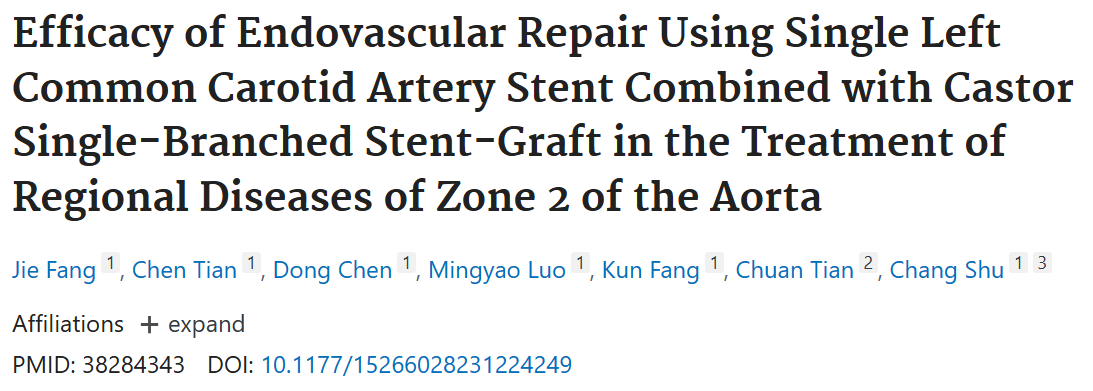Thanks to the innovation and progress of endovascular instruments and techniques, endovascular treatment of thoracic aortic diseases has gradually expanded to the arch. Castor Single branch thoracic aorta coated stent is the first CFDA-approved all-in-one single branch stent in the country. To date, more than 800 specialists at more than 700 centers have successfully treated more than 1,000 patients with Castor single-branch stents, which are widely recognized for their safety and effectiveness. Professor Chang Chang's team at Fuwai Hospital, Chinese Academy of Medical Sciences further expanded the application of Castor single-branch stents to Z2 region diseases.
Recently, Professor Shu Chang's team summarized and carried out a retrospective study to analyze the effectiveness of left cervical common chimney stent technology combined with Castor single branch coated stent intraaortic repair (SC-TEVAR) in the treatment of lesions involving Z2 region [1].

Research method A retrospective analysis of 20 patients with Z2 aortic disease admitted to the Vascular surgery Department of Fuwai Hospital, Chinese Academy of Medical Sciences from June 2021 to April 2022 was conducted. Lesions included degenerative true aortic aneurysms ≥5 cm in diameter and penetrating aortic ulcers with depths > 1.0 cm or basal widths > 2.0 cm. All patients were treated with SC-TEVAR. This technique is a new technique, that is, the left common carotid artery (LCCA) is reconstructed with the chimney stent technology, and the left subclavian artery (LSA) is reconstructed with the Castor single branch stent, which can not only effectively protect the blood supply of LCCA and LSA, but also successfully isolate the lesion. The technique is easy to operate and less invasive. Baseline and intraoperative data were collected to evaluate the safety and efficacy of the approach. The patency of target vessels and any associated complications were evaluated at 1 and 6 months postoperatively to analyze their safety and efficacy. Research result After discharge, all patients were followed up by a dedicated follow-up team. At 6 months of follow-up, there were no cardiac events, stroke, hemiplegia, type I or type II internal leakage events, no new lacerations caused by proximal covered stents or distal covered stents, no wound infection or bleeding. Only 1 patient developed a wound hematoma in the groin and received conservative treatment. Notably, none of the patients had LCCA or LSA stenosis or occlusion. The patency rate of branch artery was 100%. The technical success rate is 90%. conclusion SC-TEVAR is a safe, effective and convenient new treatment for aortic disease involving Z2. Reference


